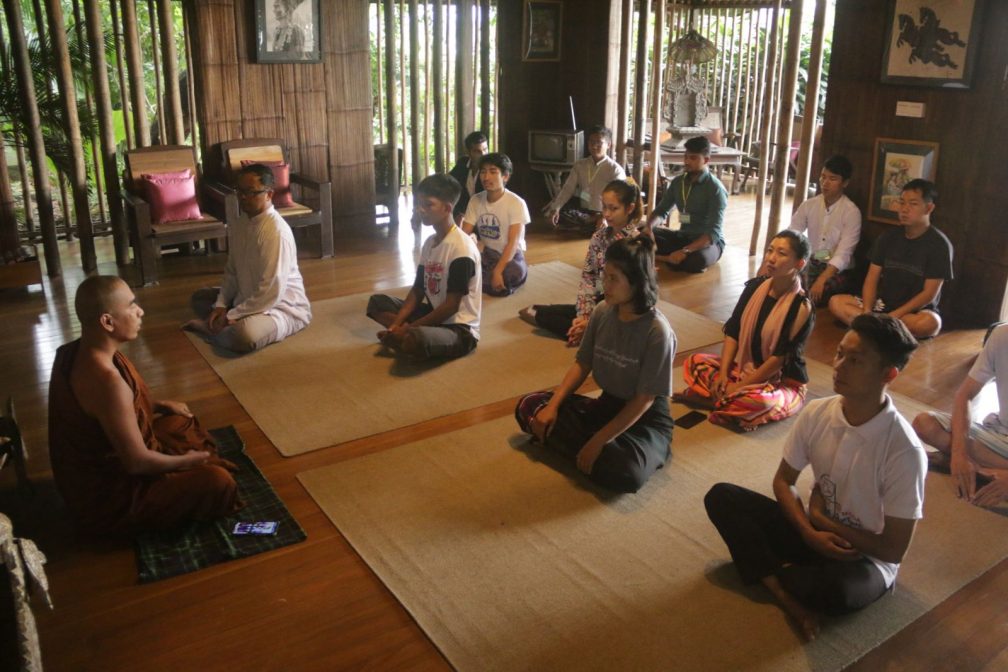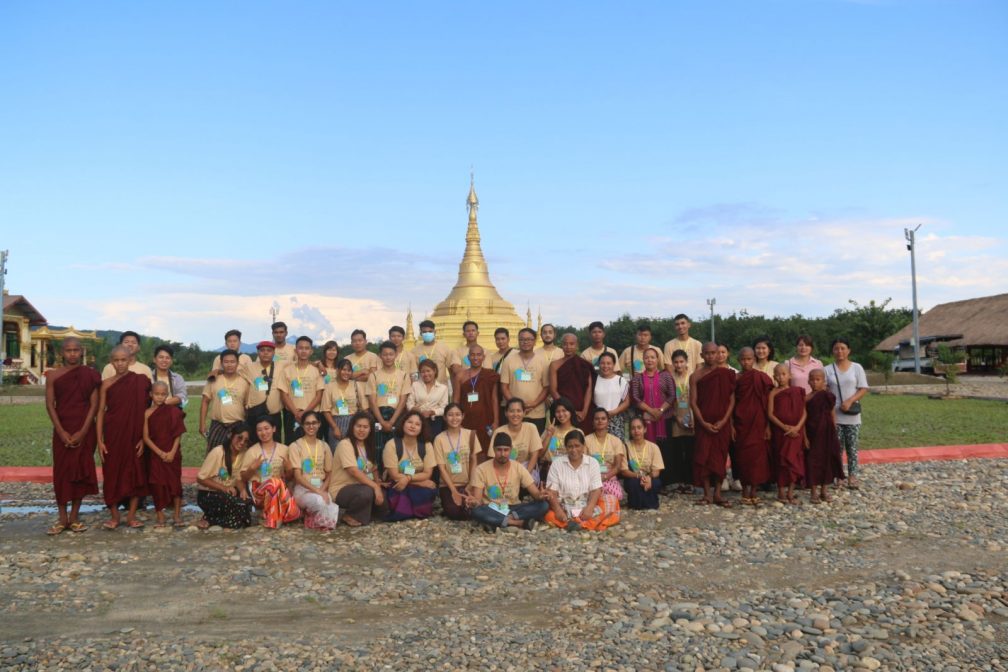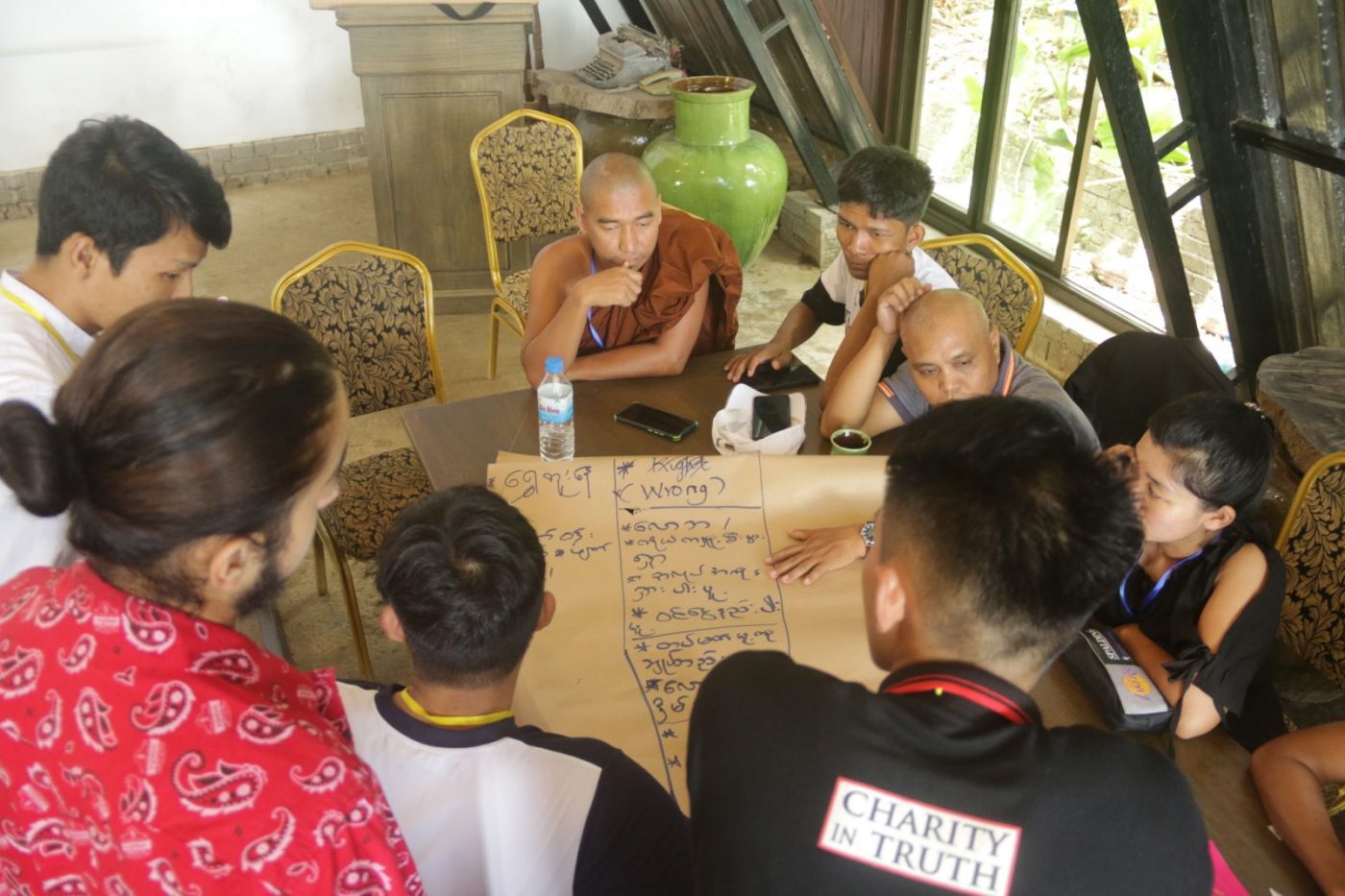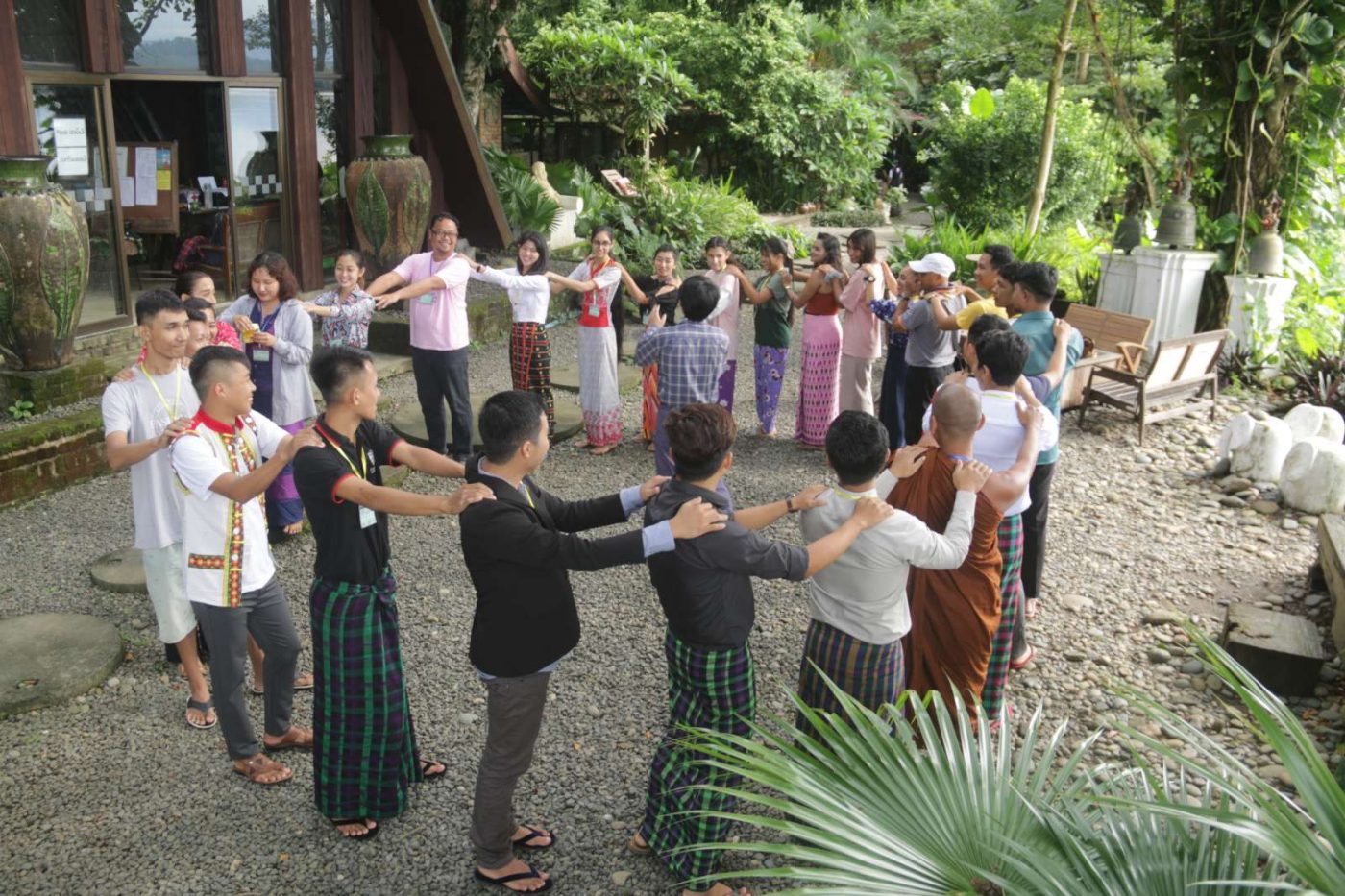
-4Myanmar has been for a long time facing numerous internal conflicts and national crisis. The country is host to the longest ongoing civil war in the world at sixty years plus. With over 135 recognized ethnic groups which call Myanmar home, these cultural differences and identities play an important role in this protracted civil war.[1] And often to every culture or tribal group is attached a particular religion or spiritual practice which makes religion an important aspect of the ongoing struggle in the country.
The diversity of the people is also a reflection of the diversity in Myanmar’s natural treasure – its flora and fauna. But the ongoing internal conflicts has intensified the destruction of its natural environment. Given this ongoing reality, the Interfaith Youth Camp which was held at the beautiful Nawng Nang Center in Myitkyina, Kachin State, Myanmar was centred around the theme “Let there be Peace on Earth. Let it begin with Me.” 16 Christians, 5 Muslims, 5 Hindus, 4 Sikhs, and 2 Buddhists attended in total.
The camp provided inputs not only on Intereligious Dialogue but also on Mental Health. Many young people are suffering from some form of mental health problems or issues. The experts provided simple and practical suggestions on managing stress and self-care. They also clarified many facts and myths about mental health. The Interreligious Dialogue session helped the participants understand the definition of true dialogue, the values and different ways of doing dialogue.
The camp also allowed the participants to share about their own religion through a 15-minute long presentation bringing along some items or symbols from their religion. On the last night during the Cultural Show, each group showed off their cultural dances and songs – Indian-inspired dances, Lisu tribal dance, Burmese songs, finishing off with the Kachin Manau dance.
Manau dance is a dance of diversity and unity. The Kachin peoples composed of 7 different groups usually perform the Manau dance for different purposes: to celebrate victory in a war or to mourn a death. Taking its inspiration from the circular movements of animals, legend has it that man learned how to dance from the birds, animals and insects. On the last night of the camp, the youth ended the program with the Manau Dance led by the Kachin Christian youths.
There was also a cultural food exchange on the last night where each group prepared and shared traditional food with everyone. The Muslims prepared samai, a dish of sweet fine vermicelli noodles mixed with warm milk. The Sikhs brought Barfi or burfi, a basic fudge made using full fat milk, sugar and ghee. The Gurkhas mostly Hindus also brought with them different kinds of Indian sweets. While the Kachin/Lisu Christians prepared traditional “jap htu,” pounded ginger, chillies, dried fish and other spices. They also prepared a traditional rice wine called “tsa pi.” As they presented their different dishes, they also explained the meaning and significance of each dish.
Every morning we also learned different meditation traditions like the Buddhist and Indian Yoga meditation. Meditating or praying together is also a form of dialogue.
The original design of the camp was to have a pilgrimage to the different places of worship – Muslim mosque, Hindu mandir, Sikh gurdwara, Buddhist temple – monastery and Christian churches. But the political situation in the country makes it dangerous and difficult to facilitate. So the participants were only able to visit a Buddhist temple-monastery, which is quite near the camp venue. At the Buddhist monastery, the participants met the head monk and his novices. The headman spoke to the participants encouraging them. Then the participants and the Buddhist monks planted some trees.
The camp also introduced to the participants the Golden Rule and the Review of Life method (See-Judge-Act). Participants were taught to use the method to look at their present situation. The participants identified climate change related issues like drought, damaged farms, gold mining and other environmental disasters. They asserted that it is wrong to only look at the economical benefits that the natural environment bring and not their innate value. Greed for profit led to many companies coming to Myanmar to steal its natural resources. People also throw their wastes anywhere and everywhere.
Through the cultural night and the food exchange we have learned to share faith, food and friendship. These three F’s for me are practical ways to do dialogue. The camp ended with the cultural night where each group was able to present traditional dances. Dialogue is like a dance. It is a movement. In dance we can have unity but also diversity. When we run out of words, body language speaks a lot. We can speak through our bodies. Through dance, we can come together with our different identities but still able to have a conversation through the dance.
[1] Stratton, Larry D., “Burma: Worlds’s Longest Ongoing Civil War-An Exploration of NGO Free Burma Rangers Philosophy and Collective Identity and its Effect on the Ethnic Burmese in Promoting Peace” (2013). Capstone Collection. 2603.









